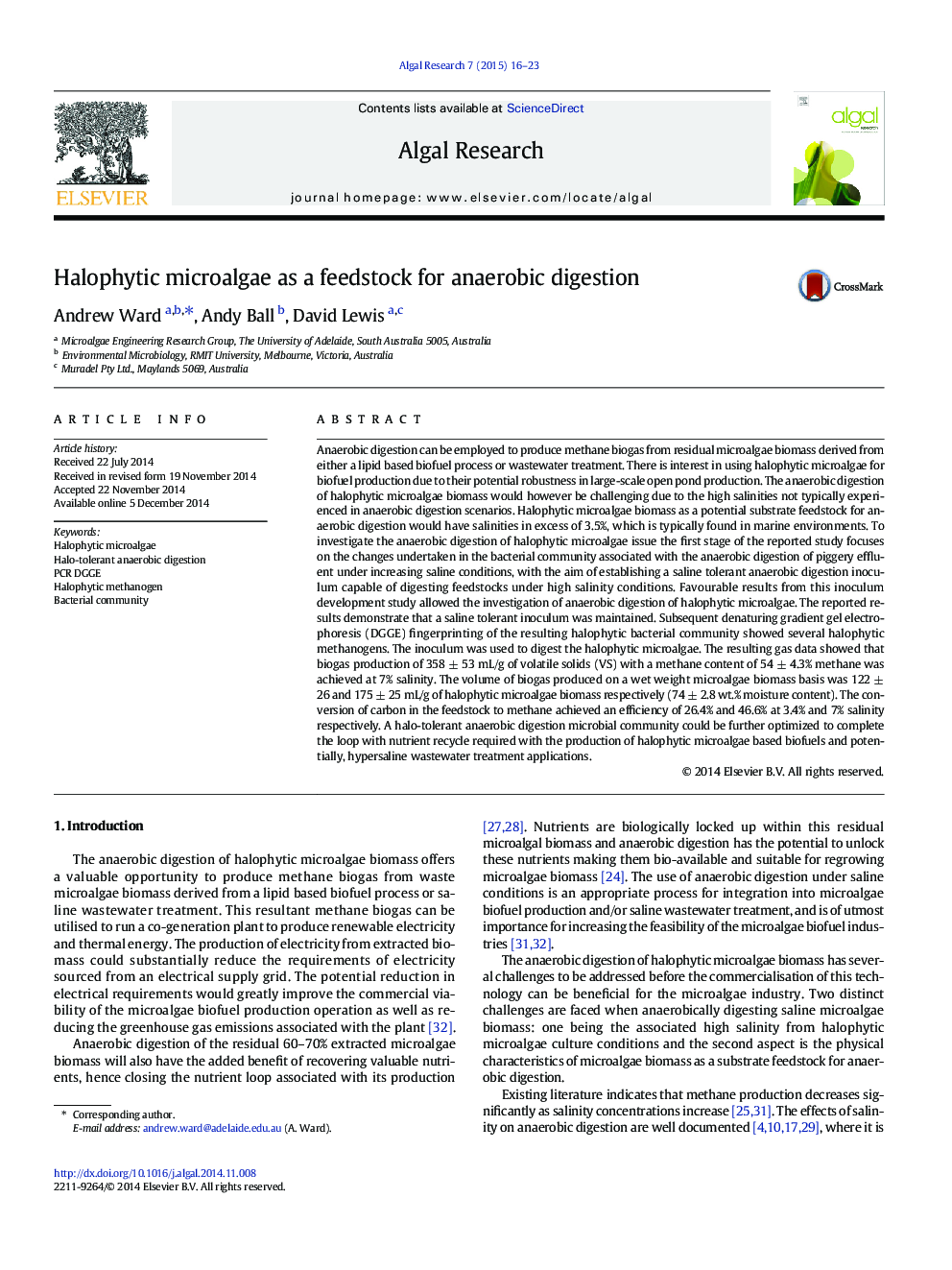| Article ID | Journal | Published Year | Pages | File Type |
|---|---|---|---|---|
| 1742060 | Algal Research | 2015 | 8 Pages |
•Investigation utilising DGGE bacterial community undertaking on an anaerobic digester bacterial community•Saline tolerant methanogens were detected in DGGE profiling.•Salt tolerant methanogens were used to anaerobically digest halophytic microalgae biomass.•Methane production rate of 358 ± 53 mL/g/VS with a methane content of 54 ± 4.3% was achieved at 7% salinity.
Anaerobic digestion can be employed to produce methane biogas from residual microalgae biomass derived from either a lipid based biofuel process or wastewater treatment. There is interest in using halophytic microalgae for biofuel production due to their potential robustness in large-scale open pond production. The anaerobic digestion of halophytic microalgae biomass would however be challenging due to the high salinities not typically experienced in anaerobic digestion scenarios. Halophytic microalgae biomass as a potential substrate feedstock for anaerobic digestion would have salinities in excess of 3.5%, which is typically found in marine environments. To investigate the anaerobic digestion of halophytic microalgae issue the first stage of the reported study focuses on the changes undertaken in the bacterial community associated with the anaerobic digestion of piggery effluent under increasing saline conditions, with the aim of establishing a saline tolerant anaerobic digestion inoculum capable of digesting feedstocks under high salinity conditions. Favourable results from this inoculum development study allowed the investigation of anaerobic digestion of halophytic microalgae. The reported results demonstrate that a saline tolerant inoculum was maintained. Subsequent denaturing gradient gel electrophoresis (DGGE) fingerprinting of the resulting halophytic bacterial community showed several halophytic methanogens. The inoculum was used to digest the halophytic microalgae. The resulting gas data showed that biogas production of 358 ± 53 mL/g of volatile solids (VS) with a methane content of 54 ± 4.3% methane was achieved at 7% salinity. The volume of biogas produced on a wet weight microalgae biomass basis was 122 ± 26 and 175 ± 25 mL/g of halophytic microalgae biomass respectively (74 ± 2.8 wt.% moisture content). The conversion of carbon in the feedstock to methane achieved an efficiency of 26.4% and 46.6% at 3.4% and 7% salinity respectively. A halo-tolerant anaerobic digestion microbial community could be further optimized to complete the loop with nutrient recycle required with the production of halophytic microalgae based biofuels and potentially, hypersaline wastewater treatment applications.
